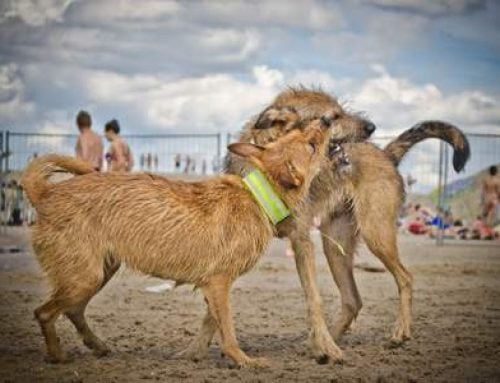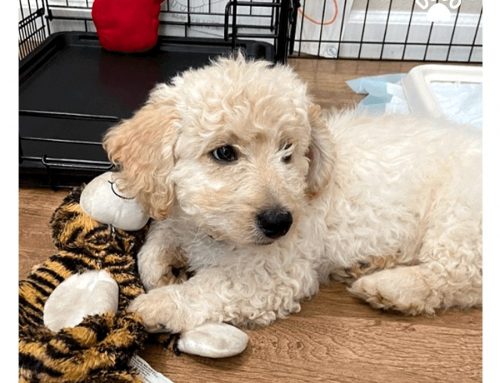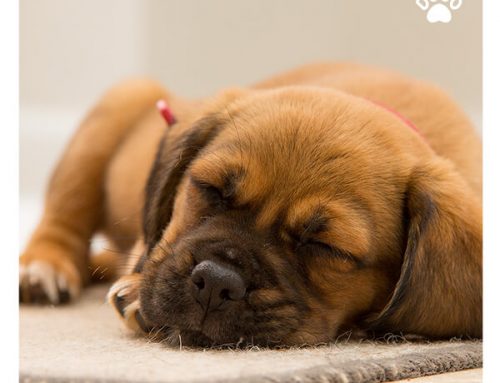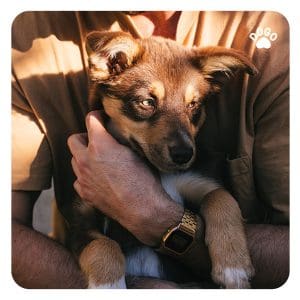
However, socialization is not a one-time event but a continuous process that should continue throughout your dog’s life. As your dog grows, they will encounter new people, animals, and situations, and it’s essential to ensure they are comfortable and confident in these situations. Therefore, it’s crucial to make socialization a part of your dog’s daily routine.
What to Do
When your dog encounters a new stimulus of any kind (person, dog, animal, object, noise):
1. Allow your dog to keep a distance.
Not only where they are safe, but also where they feel safe! Keep the stimulus/person at a distance and observe your dog – do they want to come closer? Do they lean somewhat backward or even hide behind you?
2. Give your dog the freedom to say “No.”
Don’t overwhelm your dog with being petted and fed treats. Your dog should enjoy the interaction, not just survive.
3. Keep a happy voice.
When you tell your dog “It’s okay, it’s oookaaay”, that sounds to the dog as if you say, “You are correct, this is a scary situation, it’s okay to be scared.” Keep your voice upbeat and happy, as in “That’s great, isn’t that fun?”
4. Pair the novelty with something pleasant.

Positive reinforcement is a powerful tool in dog training and socialization. When you pair a new experience with something pleasant, such as treats, praise, or playtime, your dog is more likely to associate that experience with positive feelings.
5. Have many repetitions of the happy experience.
Keep up the pairing and the pleasant experiences as long as possible, while your dog still goes through the different life stages. However, sometimes you might have to back up a little and renew a positive experience.
6. Review every new encounter.
Was my dog having fun or just “surviving” the moment? Next time, make sure you increase the rewards and lower the encounter experience if you feel your dog was just surviving or stayed neutral without really enjoying it.
It’s essential to remember that every dog is unique and may react differently to new stimuli. Some dogs may be naturally more outgoing and curious, while others may be more cautious and reserved. Therefore, it’s crucial to observe your dog’s body language and behavior when introducing them to new stimuli. If your dog seems uncomfortable or scared, it’s essential to give them space and time to adjust. On the other hand, if your dog seems curious and interested, you can gradually introduce them to the new stimulus.
What NOT to Do
1. Don’t force your dog into socializing.
Don’t throw your puppy in with many dogs at the dog park, expecting them to “figure it out.” That is a recipe for disaster!
2. Don’t ask other people to come and pet your dog.
What if your puppy doesn’t enjoy being petted by strangers? Before you let other people come closer to your dog, you have to be sure that your dog will be happy with their presence.
3. Don’t coax the dog into walking up to strangers.
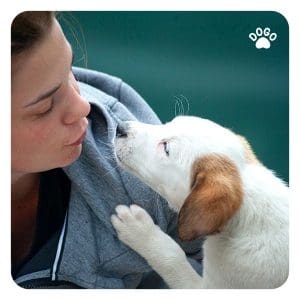
4. Don’t hesitate to get professional help.
Suppose your dog shows signs of lack of socialization like barking or growling at other dogs or people. In that case, it takes more than “going out and socializing them” to change that. If you struggle with understanding your puppy’s behavior, it might be necessary to contact a professional trainer or behaviorist.
It’s Supposed to Be Fun!
Now you know the dos and donts of socializing your puppy. It’s time to go out with your dog and look for a new, positive experience for both of you! Freel free to contact us if you have additional questions about puppy socialization or read more articles on this topic.


